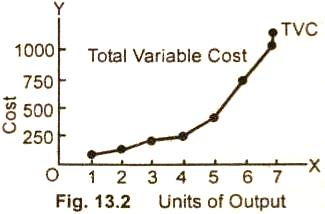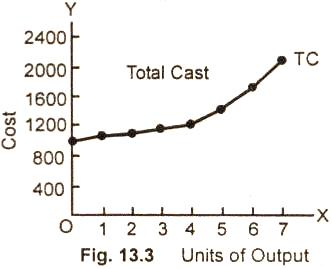Introduction
This is an article critique paper on the concept of costs of production in the short run. This paper will carefully analyze an article which was posted in the New York Times; the article briefly discussed the cost of production of grains. In this analysis, an attempt is made to expound on the concept of “costs of production in the short run” by using the example of grain production given in the article.
A summary of the article is outlined, the concept of production in the short run explained and a detailed discussion carried out on how the article explains the cost of production in the short run. Some of the factors left out by the author of the article are brought to light, and a conclusion is then drawn.
Summary of the Article
The article is authored by Justin Gillis and is titled Tracking the Global Food Situation. Gillis (2011) discussed the issue of global food supply and outlined the changes in the price of grains from the previous year (2010). In his analysis, he constantly referred to the Food and Agriculture Organization of the United Nations’ report. The report showed that there was a continuous increase in the price of food from the previous year to the extent that the prices had increased by 36 per cent compare to the previous year (2010).
The report claimed that the producers were trying all they could to respond positively to the skyrocketing prices by increasing their outputs, but the weather conditions and demand were two of the factors which significantly negated their efforts. To best analyze this article in the context of cost of production in the short run, it is necessary that an overview of the concept of cost of production in the short run is given.
The Concept of Costs of Production in the Short Run
Generally, short run in the context of economic, and specifically, when applied in the sphere of production, refers to a time range of a production activity when at least one factor of production remains constant or fixed.
In most cases, the factor of production which remains constant is the capital which can either be the machinery used in the process of production or the plant/factory through which production is carried out. In the short run, therefore, there are some factors, which can be changed while others cannot be changed.
The factors which can be changed over this period are commonly referred to as the variable factors of production while those which cannot be changed are referred to as the fixed factors of production.
The size of a firm or a farm, for the case of farming, is a fixed factor of production while the other inputs are variable factors of production, and they include resources such as labor and raw materials. As it will be shown in the discussion section below, primary production can be made to increase output in the short run by altering the variable factors of production.
Critique of the Article in the Light of Cost of Production in the Short Run
The article by Gillis (2011) discussed the price of food and specifically pointed out how the production of grains was affected. It is known that the production of grains requires the following factors of production: land, machinery, labor, water, seeds and fertilizers. Land, machinery and seeds can be said to be fixed in the context of one cycle of grain production (planting to harvesting); the graph below shows that the cost of these inputs is constant:

Figure 1
While, On the other hand, labor, water, and fertilizers are said to variable factors of production because when altered, they are likely to affect the total output. The graph below illustrates this fact.

Figure 2
TVC = Total Variable Costs
Output = amount of grain harvested.
Cost = cost of variable factors of production
When the two graphs are combined the resultant is as shown below:

Figure 3
Going back to the article by Gills (2011), an attempt to increase the output, as was attempted by the grain producers to meet the rising demand, can be carried out in the short run as well as in the long run; in the context of the article, the demand was immediate and therefore the producers attempted to increase their output in the short run.
The article does not discuss the means the producers used to increase their output but probably from the above discussion, they must have tried to use more fertilizers, maybe they also increased the amount of water, and probably engaged in more labor forces to minimize on wastage during the processing of grains. The attempt of the producers to increase the grain output can be best explained by figure 2 above which shows that an increase in the variable factor of production will consequently, lead to increased output.
Gillis (2011) noted that the efforts of the producers to increase the output were met by an increased demand which they could not satisfy. This is best explained by forces of demand and supply in the short run and is illustrated in the graph below:

Figure 4
As shown in the graph above (Figure 4), the demand for grain was way too higher than the quantity that was supplied to the market. This led to the shooting of the price upwards.
Gillis brought out another factor which affected the cost of production of grains: the weather conditions. Although weather conditions are generally not considered short term variable factors of production, in the context of the situation described by Gillis (2011), the conditions fall under the variable factors of production. A sudden and unexpected change in the elements of weather such as rain and drought usually has an adverse effect on the output of agricultural products.
According to Gillis (2011) the grain production was adversely affected by “erratic weather in many countries, including this summer’s floods and heat waves in the United States” (p. 1). As mentioned above, water is one of the factors of grain production and in this case, it is a variable factor of production. Gillis did not explain in details how the erratic weather affected grain production but instead referred the readers to a previous article he had authored.
According to the previous article, it was alleged that grain production in countries in the desert was affected by strong sun while in other areas flood starved the grain plants to death. These changes in elements of weather take place in a short while but their effects are catastrophic. These changes in weather conditions negated the efforts that were put up by the grain producers to increase their output and therefore the resultant effect was reduced output.
Factors missed out in the Article by Gillis
It was a bit absurd for Gillis (2011) to have missed mentioning the effect that the soaring price of oil had on the cost of production of grains. It is very evident that oil price literary affects, all the sectors of the economy and the grain production in no exception.
Some of the ways in which the cost of grain production was affected was through increased processing costs and increased shipment charges. It is true that grain production does not dominantly depend on oil, nevertheless; an increase in the price of oil will trickle down to increase the cost of production of grains.
Conclusion
The article by Justin Gillis was effectively used to explain the concept of the cost of production in the short run. Gillis highlighted the dilemma facing the society with the increasing price of staple grains which are commonly used to feed the world. He attributed the increases in cost of production to two factors: high demand and bad weather conditions. High demand is not a factor of production though it affects the price of the final product.
Bad weather, in the context of the article, is classified under the variable factors of production. In the short run, it is only the alteration of the variable factors of production that can increase the output. Though Gillis mentioned that the grain producers attempted to increase the output in the short run, it was not satisfactorily since the demand was too high and “erratic weather conditions” negated the efforts of the producers.
Reference
Gillis, J. (2011, September 18). Tracking the Global Food Situation. The New York Times. Retrieved from https://www.nytimes.com/